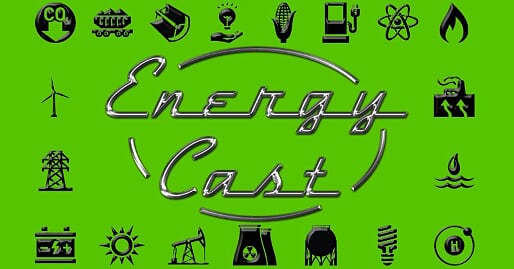Energy Cast Podcast: Using meteorology to predict solar reliability –
Energy Cast Podcast: Using meteorology to predict solar reliability –
Energy Cast is a podcast featuring some of the top experts across all links in the energy industry chain, including renewables, generation and more! Jay Dauenhauer created the show and has been hosting Energy Cast for several years.
Click below to listen to the full episode:
As we first discussed in Episode 1, meteorology has been used for years to predict how we consume energy. Now we are predicting weather to determine how much energy will be produced.
Solcast, an Australian firm operating since 2016, has been providing this weather data for utilities and grid operators around the world. My guest, CTO Nick Engerer, says as solar energy proliferates, the need for tools to anticipate supply will also need to improve.
“The weather is becoming the fuel,” says Nick. “The risk we see for weather events is the balance of supply and demand and system security is more complex and in much more need for short term weather forecasts. That’s a gap in the technology.”
Nick says Solcast relies on three principal tools for forecasting certain timeframes:
- Weather models—good for 1-7 days
- Satellite images—4-6 hours
- Ground-based sky imagers—within minutes
He adds that cloud computing and more sophisticated weather satellites have enabled a firm like Solcast to crunch massive amounts of data affordably and create an opening to help established corporate meteorology teams focus on their traditional roles.
Nick says in-house meteorologists at utilities are principally-focused on “risk-facing” weather impacts, like storms and heat waves that could disrupt services. Providing data to help anticipate renewable energy supply is where they come in.
“These meteorologists have many other tasks, they generally aren’t focused on such a niche problem,” says Nick. His own father, he adds, is a meteorologist for First Energy.
I also asked about how this could affect solar PV developers. Nick believes their tools could help streamline siting for ideal solar installations. These services will involve using historical models to create a “typical meteorological year,” with best/medium/worst-case scenarios for solar energy produced.
In Episode 25 we discussed Concentrated Solar Power (CSP), where solar energy needs to be direct—no clouds or large amounts of interference at any time. Nick believes satellite and other data are accurate enough to cite CSP.
“The question is, is the investment community, who are looking to put in a chunk of the several hundred to billions of dollars needed, willing to accept that data?” he asks. Nick says 10 years used to be required, now developers only need about 2-3 years of data for a CSP project.
Other services include a “Solar PV Performance Checker,” for residential customers, who can see how well their rooftop solar is performing. Solcast has also developed tools for wind energy, which utilities like to see as well. They currently provide services for EVN, the grid operator for Vietnam.
“They’re crossing the threshold,” he says, “where you need to start having [wind/solar] forecasting technologies so that you get supply and demand balance correct on a given day.” (This podcast originally aired in August 2020).
Energy Cast Podcast is hosted biweekly by Jay Dauenhauer.
Learn more about the podcast here.










